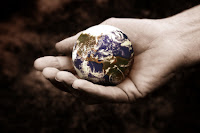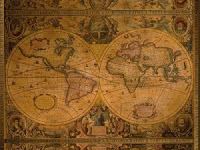 |
| Writers are atlas makers |
Do you remember playing make-believe when you were little? Playing with your friends, or with dolls or stuffed animals, and creating elaborate and often complex scenarios, relationships, situations, and rules within a make-believe world filled with magic, or monsters, or heroes, or explorers, or princesses, or anything else we could conjure up from our imaginations?
When we’re children make-believe is a way for us to be safe while experimenting with the world, testing boundaries, trying on new personas, pretending to be older, pretending to be adults, letting our imaginations take us as far away from ourselves as we can go, into new worlds and new landscapes. And then, just as Mickey returns from the Night Kitchen in time for breakfast, we can come home again, back into ourselves and into our real worlds, richer for the world of make-believe we know we can explore again whenever we want.
As we grow up, many of us outgrow make-believe. But there are some people who don’t outgrow make-believe at all, and they became…fiction writers! I loved make-believe when I was growing up, and I have no doubt that speaks in some part to how I became a children’s book editor. And one of the most fantastic parts of make-believe for me was the world–the multiple worlds, in fact–I could create in my imagination. Worlds in which I could set all the rules, worlds in which feared creatures became friends, worlds in which puppy-love crushes were manifested, worlds in which disabilities were assets, worlds in which I could be anyone and anything I wanted. So what better way to stay close to the land of make-believe than journeying into worlds created by storytellers?
Whether fantasy or realism, crafting the worlds of our stories is really akin to setting up the worlds we created as children playing make-believe, only this time we’re responsible for creating worlds rich enough, believable enough, and inviting enough for readers to join us, to journey with us, to stay there with us.
World-building is an exciting and often complicated part of writing a great book, made more complex when you recognize that the world of a story must exist on two levels–the actual world in which a main character lives and the internal world in which a main character lives–the emotional and psychological world.

Writers are atlas makers, crafting the maps their characters will need to explore and find their way through literal and figurative landscapes. And the more clearly marked and detailed and interesting these maps are, the more excited and curious readers will be to find their way through these landscapes, too.
This post first appeared on May 7, 2013, as a guest post for Ventana Sierra Workshops (www.ventanasierraworkshops.com) in advance of a June 14-16, 2013, workshop in which Emma Dryden conducts a session entitled, “Constructing the World: Internal & External World Building”